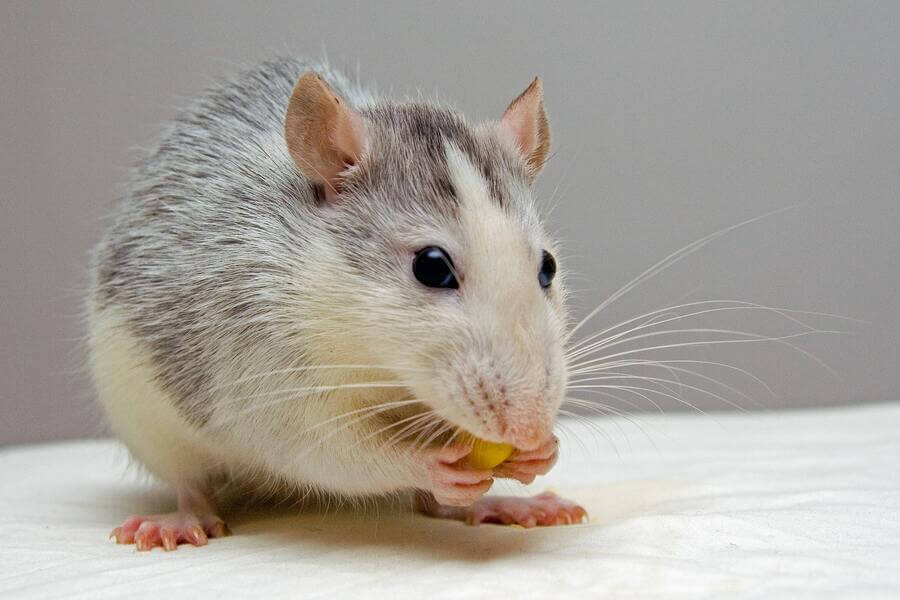Mice are unwelcome guests in any home; finding them living in or under your refrigerator can be unsettling and unhygienic.

Not only can they cause damage to your appliances and food supplies, but they can also carry diseases. This comprehensive guide will explore the steps to catch mice in or under your refrigerator effectively.
Step 1: Identify Entry Points
Mice are masters at squeezing through tiny openings. The first step in dealing with a mouse infestation under your refrigerator is identifying the entry points.
Mice are known for their ability to squeeze through tiny openings, so it’s essential to locate these vulnerable areas where they may be gaining access to your home.
Start by inspecting the exterior walls of your home near the refrigerator. Look for any gaps, cracks, or holes that could serve as potential entry points for mice. Pay special attention to areas around pipes, utility lines, and vents.
Also, thoroughly inspect the kitchen, especially the area around your refrigerator. Check for gaps or openings in the baseboards, walls, or flooring. Mice can sneak through even the smallest spaces, so be meticulous in your examination.
Mice are known to gnaw on materials to make openings or enlarge existing ones. Look for chew marks or signs of biting on walls, cabinets, or other surfaces near the refrigerator.
Once you’ve identified potential entry points, it’s crucial to seal them off. Use steel wool, caulk, or foam insulation to block openings. This will prevent mice from entering and help with energy efficiency.
Step 2: Inspect the Area
Now that you’ve blocked their entry points, it’s time to inspect the area around your refrigerator. Scanning the area around your refrigerator is crucial in ensuring you not only catch the existing mice but also prevent new ones from invading your space.
When you’ve blocked their entry points, you’ve taken a significant stride, but a comprehensive inspection adds security to your efforts.
Start by carefully moving the refrigerator away from the wall, giving you a clear view of the floor and surrounding areas. Mice are resourceful creatures that create nests from soft materials like paper, fabric, and insulation.
By inspecting these potential nesting materials, you can identify areas where mice might hide. Look for shredded paper or fabric, which are clear indicators of mouse activity.
Additionally, be vigilant for droppings – small, dark, pellet-like feces often found near their nests.
Furthermore, pay close attention to chewed wires or cables.
Mice have a penchant for gnawing on various objects, including electrical wires, which threaten your appliances and are a fire hazard. Use a flashlight to peer into dark corners and hidden spaces, as mice are nocturnal creatures and prefer shadowy spots.
By conducting a thorough inspection, you confirm the presence of mice and gain valuable insights into their habits and hiding spots. This knowledge equips you to strategically place traps and deterrents, ensuring you target the specific areas where mice are active.
Step 3: Remove Food Sources
Mice are attracted to your home by the promise of food, so eliminating their food sources is essential in eradicating an infestation. So, the second step to catch them is to ensure all food items are stored in airtight containers, dehydrated goods like cereals, grains, and pasta.
Mice can chew through cardboard and plastic packaging. Also, regularly clean your kitchen, including under and behind the refrigerator. Sweep up crumbs, wipe down surfaces, and promptly clean any spills to eliminate potential food sources.
If you have pets, don’t leave their food out overnight. Store pet food in sealed containers and only put out the amount your pet will consume in one sitting. Also, dispose of trash regularly and use a trash can with a tightly sealed lid. Mice can be attracted to the smell of food scraps in the garbage.

Step 4: Place Traps
Placing traps is one of the most common and effective ways to catch mice.
. Snap traps are readily available at most hardware stores. To use them, bait the web with a small amount of peanut butter or cheese and set it in areas where you’ve seen mouse activity.
Be sure to position the traps along walls or corners, as mice follow these paths. Check the traps regularly, and when you’ve caught a mouse, dispose of it in a sealed plastic bag and wash your hands thoroughly.
Step 5: Use Poisons and Rodenticides
Poison baits and rodenticides are another option, but they should be used cautiously. Place the bait in areas frequented by mice but out of reach of pets and children.
Be vigilant when using these chemicals, as they can be harmful if ingested by non-target animals. Always follow the manufacturer’s instructions carefully.
Step 6: Use a Humane Trap
If you prefer a humane approach, consider using live traps. These traps allow you to catch mice without harming them. Live traps, also known as catch-and-release traps, are an excellent choice for those who want to avoid causing harm to these tiny creatures.
Humane traps are typically small, rectangular containers made of plastic or metal with a hinged door that closes when triggered by the mouse’s entry. These traps are designed to capture the mouse alive without injuring it.
To effectively use a humane trap, you must bait it with something that will entice the mouse to enter. Mice are attracted to foods like peanut butter, small pieces of fruit, or bread. Place the bait at the far end of the trap so the mouse has to enter to reach it fully.
Avoid overloading the trap with a trick, as this might make it too easy for the mouse to snatch the food and escape without triggering the trap. Ensure you position the humane trap in areas where you’ve observed mouse activity.
Near the refrigerator or along their known pathways are good locations. Mice tend to follow walls, so placing the trap along a wall is often effective.
Step 7: Replace Traps Regularly
Replacing them regularly is crucial regardless of the type of trap you choose. Snap traps can lose effectiveness if they snap without catching a mouse, and glue traps can become less sticky over time.
Replacing traps ensures you maintain a high level of efficacy. Check them daily, and if you notice any signs of wear or if you’ve caught a mouse, replace them promptly.
Also, refresh the bait to keep it enticing. Consistency in trap maintenance is critical to success.
Step 8: Consider Natural Rodent Predators
Nature has its way of controlling pests, and introducing natural rodent predators can be an intelligent solution. Cats, for example, are known for their mouse-hunting prowess. If you’re a cat owner, your feline friend might be the best ally in your fight against mice.

Owls and snakes are other natural predators that can help keep the mouse population in check. Encourage these predators to visit your area by providing shelter or habitat they find inviting, such as owl boxes or rock piles for snakes.
Step 9: Take Preventative Measures
Once you’ve dealt with the mice under your refrigerator, you must take preventative measures to keep them from returning. Seal any potential entry points in your home, such as cracks, holes, or gaps around doors and windows.
Keep food stored in airtight containers to deprive mice of easy access to sustenance. Regularly clean up crumbs and food spills and maintain a clutter-free environment to eliminate potential hiding spots.
Conclusion
In conclusion, dealing with mice living in or under your refrigerator may seem daunting, but with the right strategies and patience, you can regain control of your home and keep these unwanted guests at bay.
Combining these techniques and staying vigilant, you’ll catch mice and create a mouse-proof home to enjoy peace of mind and a pest-free living space.
